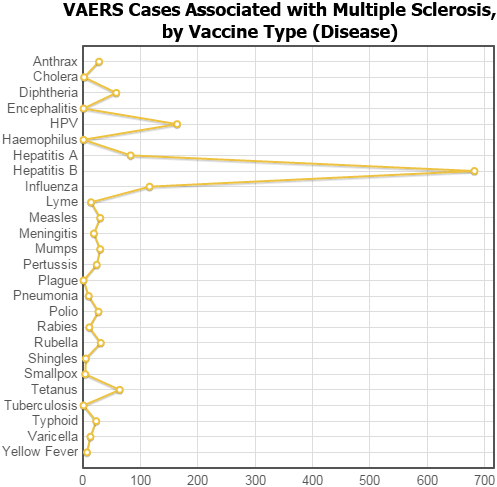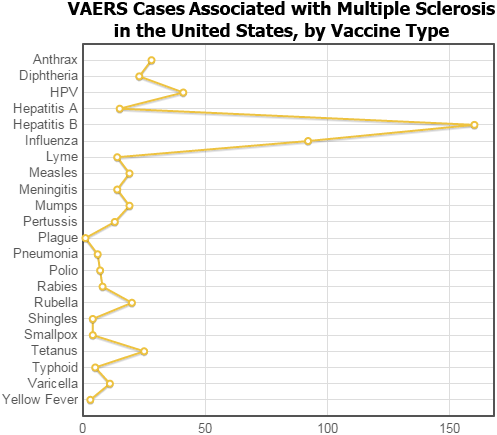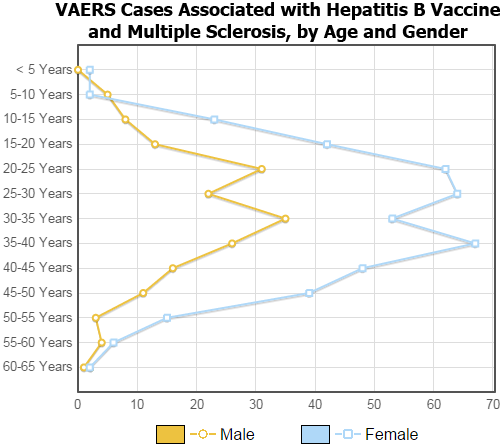
Information Center
Your Health. Your Family. Your Choice.
 |
National Vaccine Information Center Your Health. Your Family. Your Choice. |
The MedAlerts Blog |
A recent report from France claimed that the Hepatitis B vaccine may be linked to the development of multiple sclerosis. The NVIC points out that this is not news: France stopped requiring the Hepatitis B vaccine for schoolchildren in 1998 because of multiple sclerosis-like symptoms.
Does VAERS data support this?
Of course, multiple sclerosis is not something that appears quickly after a vaccine, so it is difficult to say for sure whether the two are linked. Still, VAERS data does list many symptoms, including multiple sclerosis. So we can examine the data to see if any connection, even a weak one, can be found.
To do this, use Expert Mode (the checkbox in the upper-left of the search form). Then, in Section 2 (Symptoms), select the MedDRA level HLT (Higher-level Terms), and select the HLT Symptom Keyword Multiple scleroris acute and progressive. Remember that the MedDRA is a 5-level symptom classification system used by VAERS and many other medical databases. By selecting this symptom, the VAERS search includes a number of lower-level terms that are variations of multiple sclerosis, in this case, "Multiple Sclerosis", "Multiple sclerosis relapse", "Progressive multiple sclerosis", "Relapsing-remiting multiple sclerosis", and "Uhthoff's phenomenon." Finally, in Section 1, make a Graph of Vaccine Type (Vaccine Type organizes vaccines according to the disease that they target).
Here is what you get:

One question that might reasonably be asked is if this is a phenomenon that happened only in France. Is it also a problem here in the United States? VAERS data is collected by the U.S. Government, but it includes many cases that come from foreign sources. So let's run the search again and exclude those foreign sources. In Section 5 (Demographics), set the Location to Exclude Foreign. The search now looks like this:

Another question we can ask is who are the people reporting multiple sclerosis after a Hepatitis B vaccine? We can break it down by age and gender. To do this, make a Graph of Age, Custom and Gender and in the Custom Age Ranges section, click Set Uniform (again, this requires Expert Mode). Next, in Section 3 (Vaccines) select the vaccines that have a Hepatitis B component: 6VAX-F, DTAPHEPBIP, DTPHEP, HBHEPB, HEP, and HEPAB (for a description of the VAERS vaccine codes, click here). The result, shown below, indicates that this phenenomenon is prevalent in people age 20 to 50 and is more of a problem for women.

Copyright ©
2025 National Vaccine Information Center. All rights reserved.
21525 Ridgetop Circle, Suite 100, Sterling, VA 20166